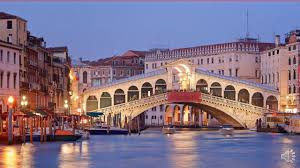Energy Efficiency And Climate Change
Energy efficiency refers to the excellent, total and
complete utilization of lesser amounts of energy to perform a particular task.
In simple terms, it’s wholly using less energy to do more. Energy efficiency is
one of the solutions used in climate change mitigation, alongside nature based
solutions, carbon capture and storage and renewable energy.
First, energy efficiency ensures that lesser amounts of energy are used and therefore lesser amounts of energy are generated. Given that fossil fuels contribute to slightly more than three quarters of energy used in the world, being energy efficient would reduce the amount of carbon emissions and other greenhouse gases released into the atmosphere. This is effectively climate action.
Using energy efficiently can be applied everywhere but the
main focus is industries, household use, transport and buildings
In households, a lot of the energy consumed is by
appliances. Using newer and more modern versions of appliances reduces the
amount of energy used to do something. Old generation appliances are more
bulky, consume more power and take more time to do the same thing. Another
thing is to reduce load on the grid. Plugging in many gadgets which for the
most part are not necessary or perform similar functions increases the amount
of energy used and can stress the grid.
Usually, many countries have a labelling system, where
appliances are rated based on their energy efficiency. This informs consumers
and creates awareness thereby influencing their spending habits towards cleaner
and more efficient equipment.
Electrification of systems is one of the first methods to
promote energy efficiency. Electricity can be used for lighting and cooking in
place of other less efficient means. For example, to heat up a place rather
than free burning wooden stoves. Electrification immediately saves a lot of the
energy that would be wasted into the open atmosphere.
Use of LED lights instead of the more energy intensive
incandescent lights helps conserve energy. LEDs use little energy and provide
the same amount of light.
Perhaps some of the most common sense energy efficient
measures is to simply switch off the lights when not using them.
In building design, there is the use of green technologies
such as using breathable or natural materials, providing natural insulation and
placement of windows in a way meant to amplify natural light. All this lessens
amounts of generated energy used and contribute to energy efficiency.
Clever placement of windows ensures that natural light,
which also is good for eye and brain health, is used to the maximum. Sunlight
is natural and costs nothing but when carefully tapped can greatly reduce the
energy used in lighting.
Building design should use light materials, which are able
to absorb heat and allow free aeration at the same time. That is, buildings
that are not heavy and bulky, which are able to naturally retain heat without
excessively warming up a place. In cold conditions, they should absorb heat and
in warm conditions release it.
Smart meters, shading and use of renewable energy on site or
otherwise are some of the ways to make a building energy efficient. Buildings
can be constructed with rooftop solar photovoltaic and this used to generate
onsite electricity to power the building. In actual sense, sometimes the energy
generated might be more and this can be sold to the main grid or transferred to
other buildings.
Buildings can also use offsite renewable energy like solar
or wind. Offsite means it is generated elsewhere but used to power the
building. Making a building energy efficient also includes the use of greenery
on the walls or the roof. Such absorb carbon emissions, release oxygen and
moisture and their general effect is cooling and ‘re-watering’ the atmosphere.
In this way, they reduce the amount of energy a building needs especially for
cooling.
Green plants are natural air conditioners.
Since there’s a good number of buildings which were
constructed earlier and are not so efficient, retrofitting such structures in a
bid to save power can be carried out.
New developments in renewable energy storage (use of
batteries) are targeted towards increasing the amount of energy stored and with
lower environmental costs. Better batteries mean that less energy is wasted and
more is conserved. Alternatively, energy sources can be turned off or down when
the building is not in use (off peak hours) i.e. when occupants are out or it’s
at night. This saved energy can be used later on during peak hours.
Solar photovoltaic if sufficiently deployed has higher
penetration rates than main grid electricity and can serve areas that are
remote or far flung. Solar can go a long way to make a community self-sufficient
or a nation both energy independent and energy secure.
 |
| A solar PV technician -Martin Oduor/jiji.ke |
Smart thermostats are another measure that promotes
efficiency.
Use of building codes and energy efficient standards as well
as certification programs also promote certain levels of energy efficiency
particularly for buildings.
Digitalisation of the grid in terms of control of energy
supply, use and distribution in buildings also provides quick, easy and
accurate data that can be used to identify trends as well as gaps and so inform
measures to be taken for energy efficiency. It also improves reaction times and
stops wastage of energy due to delays. Digital means can be used in battery
exchange businesses which is a fast way to promote efficiency.
The heating, ventilation and air conditioning industry is
one of the biggest consumers of energy. During cold conditions, homes and other
buildings need to be heated and this is done by heating and sealing the air
which then circulates the warmth. Cooling during summer is done using fans. Air
conditioning too.
A good percentage of this is done using natural gas as the
fuel that is burnt to provide energy. Even though natural gas has the lowest
amounts of greenhouse gases in comparison to coal and oil, it is still a fossil
fuel and produces carbon emissions.
Natural gas is what powers water boilers in winter. Now, in
order to make such energy efficient, electric heat pumps can replace boilers
and fuel pumps in buildings and homes. These two though commonly used in the past
are very inefficient in terms of energy and more polluting. They are a health
hazard because of indoor pollution.
Heat pumps are about thrice more efficient than these
traditional alternatives and are powered by electricity. To further increase
their use, training of personnel who install these in buildings is necessary.
These pumps when weighed overall are cheaper in terms of financial costs and
the health benefits.
Indoor pollution is also caused by inefficient methods of
cooking such as woodfuel. Woodfuel wastes a lot of energy and releases quite a
number of pollutants into the atmosphere, lowering air quality and endangering
respiratory, newborn and maternal health.
Biogas, liquefied petroleum gas (LPG) and bioethanol are
some of the methods that can replace biomass. They generate little indoor
pollution i.e. they burn cleaner and more completely, last longer and are
cheaper. Biogas in particular can be produced from household waste or composted
manure. It is easy to generate and the advantage is that it can be produced
independently and in small scale. It can be for individual household use or can
be generated from large scale facilities such as municipal waste landfills and
this redistributed back to the grid in terms of electricity or supplied as
cooking fuel.
Technology is a major pillar of energy efficiency. An
example is the use of smart buildings. These buildings are grid efficient and
energy use is controlled by technology and not manually. These buildings also
can in a way in terms of energy, “self-regulate.”
Electric vehicles aim to reduce emissions from the transport
industry, specifically phase out the internal combustion engine (petrol and
diesel cars) used in road transport. Electric vehicles are zero emission and
are charged using electricity generated from renewable sources. They are more
energy efficient and are in fact better for human and environmental health. EVs
are the future of road transport and have experienced growth in uptake from
both established and new markets.
The transport industry can promote energy saving by
encouraging use of public transport. Public transport systems use reduced
amounts of energy to mass transport people from one area to another. They
reduce vehicle congestion and traffic jams and lower the energy burned on the
roads. Another benefit is in terms of health – they reduce respiratory
illnesses. And yet another social benefit is that they promote community and
human interaction.
Governments could do well to create liveable, human-oriented
cities that encourage walking or use of bicycles. This could be augmented by
nature parks. All this reduces energy demand.
Another way to be energy efficient is to use trains instead
of air planes. Planes have a higher carbon footprint than trains, are more
expensive and use more energy intense fuel.
Energy efficient methods can be deployed in the paper
making, steel, cement and chemicals industries, which are heavy and energy
intensive. Given that these industries are reliant on fossil fuels, changing
fuels used could cut the amounts of mainly coal and oil used and so vastly cut
emissions. Electrifying industrial systems particularly furnaces used in the
production process can also save on energy and mitigate climate change. Better
utilization of waste heat can also reduce energy costs.
Now, energy efficiency is to a large part controlled by human
behavior which is why it is essential to raise public awareness. Conducting
mass education and trainings can encourage the adoption of energy efficiency
measures. Peer to peer campaigns, community outreach and sensitization using
media can all give good results.
Starting from the earliest levels –the institutions of
learning and home training, people can be taught to conserve energy and be
mindful of their actions.
By far, the most important thing is to build capacity for
this particular sector. All cadres of qualified workers from policy makers,
specialists in clean energy, managerial levels and technical/practical skilled
workers are acutely needed in large numbers to steer the world towards energy
saving.
In other ways, innovation is one of the strongest tools of
energy efficiency. Newer and better strategies to conserve energy are still
under research and this area holds immense potential.
Now, energy efficiency can cut GHG emissions by about a
quarter to a half, and so in a great way reduce the impacts of climate change.
It is an important part of the decarbonization plans of many countries. It is included
in many of the individual nationally determined contributions (climate plans)
submitted by countries in an effort to fight climate change.
Energy efficiency also plays a crucial part in the net zero
emissions target by midcentury.
In other ways energy efficiency measures can be employed
during power shortages, some of which are occasioned by the impacts of climate
change. An example would be extended droughts impacting generation of
hydropower and also causing higher energy demand but lower supply and so
rationing.
More power is needed when it’s hotter, for example during
climate change caused heat waves. Heat waves require more power used in cooling
and similar to droughts, they stress energy supply sources and overwork the
grid.
In general, energy efficiency has multiple benefits. It lower amounts of energy used, greatly reduces
financial costs, creates jobs, improves the quality of air, has short and long
term health benefits, is better for the economy at large, and safer for environment.
Energy efficiency is the number one strategy to greatly cut
energy related emissions and so works towards climate action, of which climate
change is the biggest challenge of modern times but something the human race is
well equal to.




Comments
Post a Comment